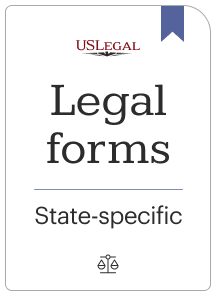

This affidavit provides for a death certificate of the deceased life tenant to be attached. It is evidence of the death of the life tenant and names the remaindermen. Title: Understanding the Affidavit Terminating Life Estate Format: Types and Key Considerations Introduction: An Affidavit terminating a life estate is a legal document utilized to legally dissolve or terminate a life estate arrangement. This legally binding document outlines the process and conditions agreed upon for ending a life estate. In this article, we will delve into the essential details of the Affidavit terminating life estate format, as well as the different types available for various circumstances. Key Content and Format of an Affidavit Terminating Life Estate: 1. Heading: The document's heading should clearly state "Affidavit Terminating Life Estate" and include the names and addresses of the parties involved, such as the granter (life tenant), the remainder man, and any witnesses. 2. Statement of Intent: The Affidavit should explicitly state the intention to terminate the life estate, including a clear statement of the date when the life estate is set to end. 3. Identification of Property: Provide a detailed description of the property subject to the life estate, including the legal description, physical address, and any official property identification numbers. 4. Affirmation of Granter's Capacity: The Affidavit should affirm that the granter (life tenant) possesses the legal capacity to terminate the life estate. This affirms that the granter is of sound mind, age, and not under any undue influence or duress. 5. Granter's Authority: Outline the authority granted to the granter to terminate or dissolve the life estate legally. 6. Signature and Notarization: The Affidavit must be signed and dated by the granter in the presence of a notary public. The notary public then notarizes the granter's signature, certifying its authenticity. Different Types of Affidavit Terminating Life Estate Format: 1. Voluntary Affidavit: This type of affidavit is used when the granter willingly terminates the life estate agreement, typically due to personal reasons or circumstances. It involves mutual agreement between the granter and the remainder man. 2. Judicial Affidavit: In cases where a dispute arises regarding the termination of a life estate, a judicial affidavit may be required. This type of affidavit is filed in court and ultimately decided by a judge. 3. Insufficient Consideration Affidavit: When a life estate was granted without proper consideration (e.g., inadequate payment or no payment at all), an insufficient consideration affidavit may be used to terminate the life estate. Conclusion: An Affidavit terminating a life estate serves as a legal instrument to dissolve or terminate a life estate agreement. By following the necessary format and including relevant information, parties involved can ensure that the termination process is carried out in a legal and orderly manner. Whether it's a voluntary, judicial, or insufficient consideration affidavit, understanding the different types of termination affidavits can help navigate the intricate legalities associated with life estates.
Affidavit Terminating Life Estate with Deed: A Comprehensive Overview When it comes to estate planning and property transfers, understanding the concept of an Affidavit Terminating Life Estate with Deed is crucial. This legal document enables the termination of a life estate, transferring full ownership of the property to the remainder man. In this article, we will delve into the intricacies of this important document, outlining its purpose, features, and different types. An affidavit is a written statement made under oath, typically used to provide evidence or information to the court. In the context of terminating a life estate, an affidavit serves as a declaration of the granter's intent to extinguish a life estate and convey the property's ownership to the remainder man. It is accompanied by a deed that legally transfers the property rights. The purpose of the Affidavit Terminating Life Estate with Deed is to formally end the granter's possessor interest in the property granted as a life estate. It allows for an efficient transfer of ownership, eliminating the need for lengthy probate proceedings or court intervention. Different Types of Affidavits Terminating Life Estate with Deed: 1. Affidavit Terminating Conventional Life Estate: This type of affidavit applies when a conventional life estate was created, with clearly defined life tenants and remainder men. It serves to dissolve the life estate, transferring complete ownership to the designated remainder man. 2. Affidavit Terminating Legal Life Estate: In the case of a legal life estate, which occurs when a specific condition or event triggers the termination of the life estate, this affidavit is employed. The granter declares that the condition has been fulfilled or the event occurred, allowing the termination of the life estate with the conveyance of property rights to the remainder man. 3. Affidavit Terminating Testate Life Estate: When a life estate is created through a valid will, this affidavit is necessary to terminate it according to the provisions of the will. The affidavit outlines compliance with the stipulations outlined in the testator's will, ensuring the smooth transfer of property rights. 4. Affidavit Terminating Intestate Life Estate: If a life estate is created by law due to the absence of a valid will or testament, this affidavit is employed to terminate the life estate. It establishes that the legal requirements have been met, allowing the extinguishment of the life estate and the passing of ownership to the remainder man. In conclusion, an Affidavit Terminating Life Estate with Deed is an essential legal document used to terminate a life estate and transfer the complete ownership of the property to the designated remainder man. By understanding the different types of these affidavits, individuals can ensure a smooth and efficient transfer of property rights, in accordance with their estate planning goals.
Eliminate the headache that comes with your legal paperwork. Explore the extensive US Legal Forms library where you can find legal templates, examine their relevance to your circumstances, and download them immediately.